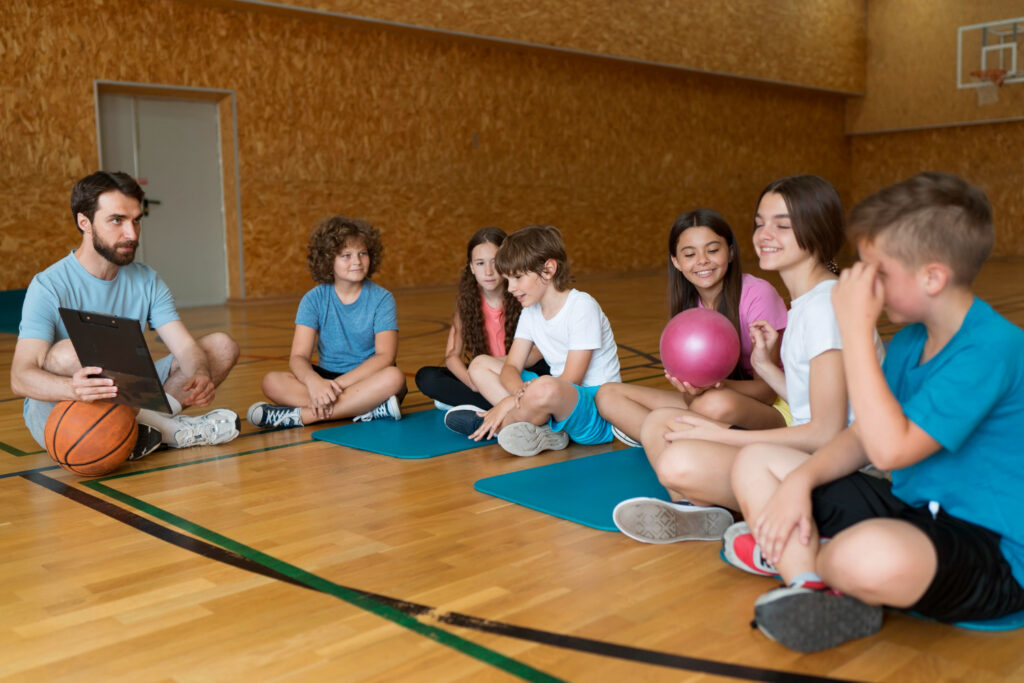Introduction: More Than Just Playtime
When children run, jump, stretch, and play, they’re not just having fun—they’re learning. That’s the essence of physical education (PE). Understanding what is physical education helps us see how movement and play build not only strong bodies but also sharp minds and positive habits.
At schools like the best schools in Whitefield, PE isn’t just an activity between classes—it’s an essential part of shaping confident, focused, and well-rounded students.
What is Physical Education?
Physical Education is a structured subject that involves physical activities like sports, exercise, and movement games. It helps children develop strength, coordination, social skills, and health awareness.
A good PE program includes:
- Fitness and motor skill development
- Team sports and group activities
- Lessons on posture, hygiene, and health
- Focus on discipline, cooperation, and emotional regulation
Why Is Physical Education Important for Children?
1. Promotes Healthy Physical Development
From muscle strength to posture and endurance, PE keeps children physically active and energized. Combined with proper eating habits, it supports overall physical well-being.
2. Boosts Focus and Learning Capacity
Physical movement increases blood flow to the brain, which improves concentration and memory—making children sharper in the classroom.
3. Teaches Emotional and Social Growth
PE teaches students how to work as a team, handle pressure, follow rules, and accept wins and losses gracefully. These are life lessons in disguise.
4. Encourages Active Outdoor Play
Outdoor PE classes are not just fun—they reduce screen time and help children connect with nature. Learn more about the benefits of outdoor play for healthy child development.
Real-Life Role Models: Where PE Can Lead
Many celebrated Indian athletes began their journeys on school playgrounds. Their early exposure to physical education shaped their discipline and drive.
- P.V. Sindhu – Picked up a badminton racket at age 8 and went on to win Olympic medals
- M.S. Dhoni – Started as a football goalie before cricket made him a national icon
- Neeraj Chopra – Introduced to javelin in school and became an Olympic gold medalist
Their stories remind us that every game in school PE has the potential to spark greatness.
How Physical Education Complements Academic Learning
Physical education strengthens skills taught in other subjects. Here’s how:
| Subject | PE Connection |
| Science | Anatomy, muscles, breathing, energy use |
| Math | Scoring, angles, time, and measurement |
| English | Communication in team games and activity reflection writing |
| Geography | Weather, terrain, and outdoor activity planning |
| Art & Music | Movement through dance and rhythm-based games |
That’s why many top schools in Bangalore emphasize PE as part of holistic education.
What Happens in a Good PE Class?
An ideal PE class is engaging, structured, and inclusive. It may include:
- Warm-up and stretching
- Core activities like relay races, basketball, or yoga
- Cool-down and breathing exercises
- Group discussions on teamwork or sportsmanship
It’s not about winning every match—it’s about moving, learning, and growing together.
Conclusion
Now that we understand what is physical education, we realize it’s not just about movement. It’s about mindset. PE instills lifelong habits—of health, resilience, and community. Whether it’s learning to work as a team or discovering the joy of staying active, every child deserves a chance to move with purpose.
Let’s support schools that prioritize PE and give students the space to run, play, and thrive.
FAQs
Physical education is a school subject where students participate in physical activity to stay fit, learn skills, and grow healthy habits.
It improves focus, memory, and energy, helping children perform better in other subjects.
PE includes running, yoga, games, team sports, stretching, and sometimes dance or martial arts.
Yes. It promotes communication, cooperation, leadership, and dealing with success and failure.
Absolutely. It contributes to physical, emotional, and social development, forming a foundation for lifelong well-being.

